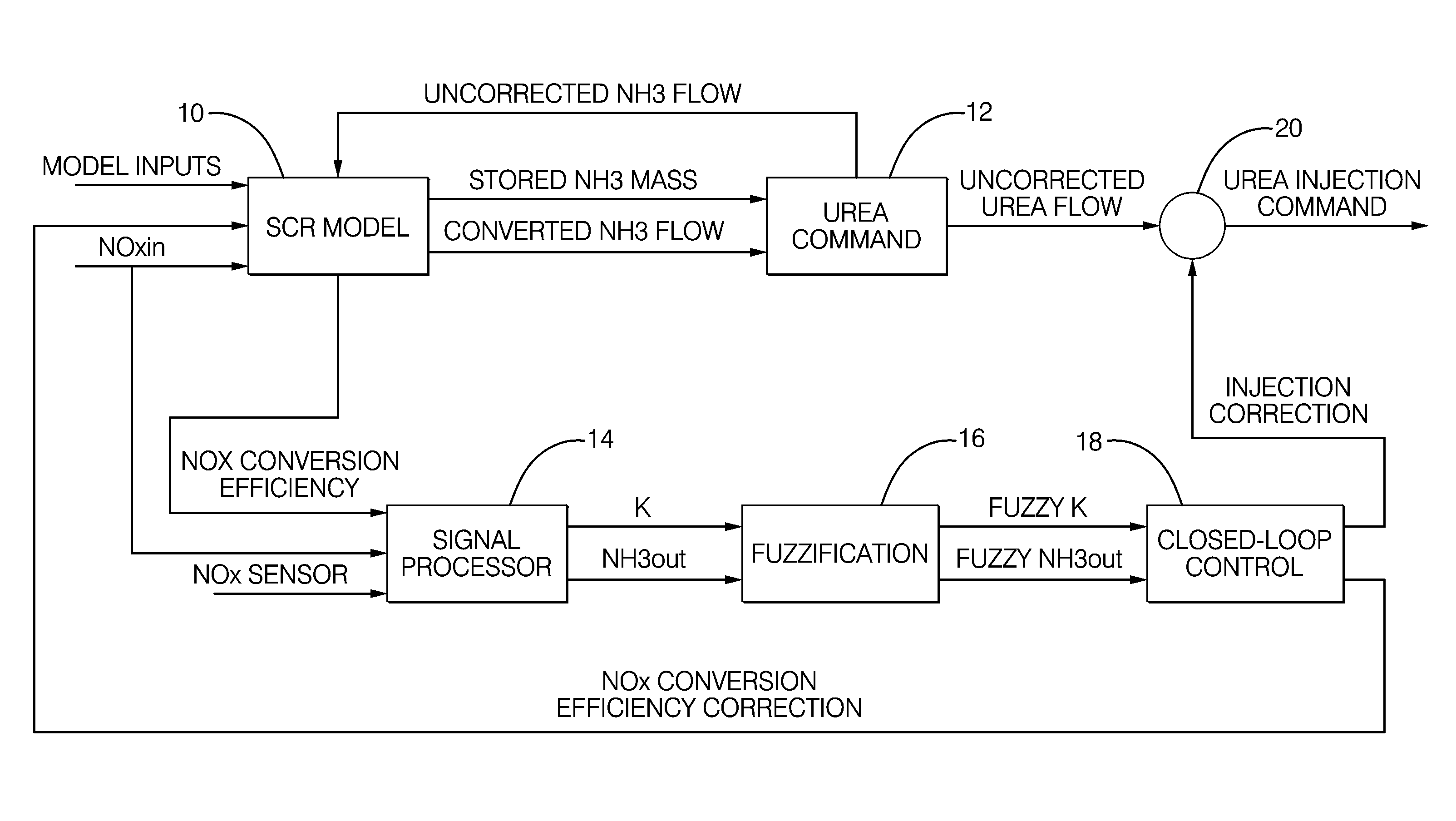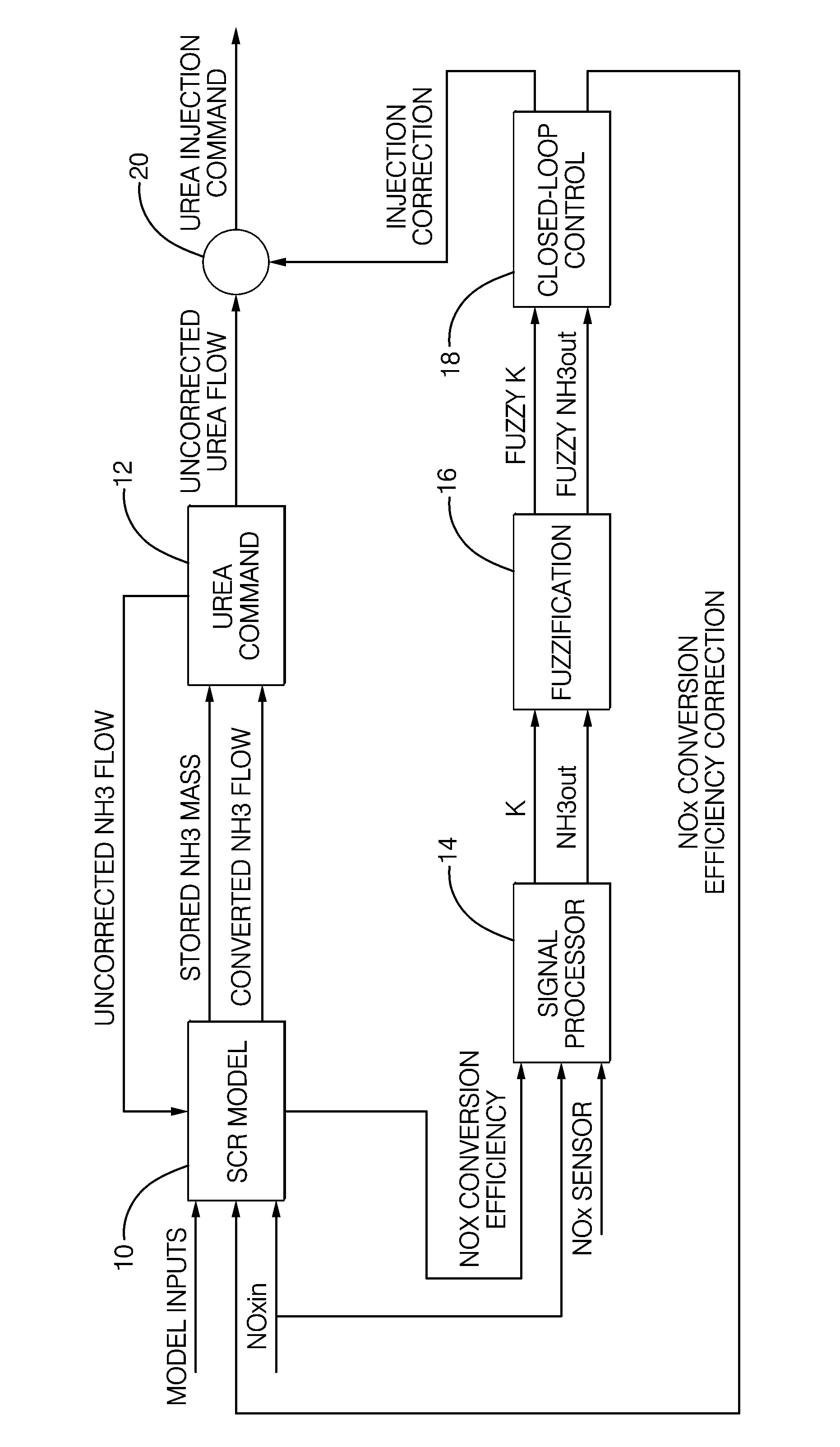Method for controlling a SCR catalyst
a technology of selective catalytic reduction and control method, which is applied in the direction of machines/engines, separation processes, mechanical equipment, etc., can solve the problems of nox sensors being sensitive to nhsub>3/sub>, creating additional difficulty, etc., and achieve the effect of reducing the supply of reactants
- Summary
- Abstract
- Description
- Claims
- Application Information
AI Technical Summary
Benefits of technology
Problems solved by technology
Method used
Image
Examples
Embodiment Construction
[0038]As it has been explained, the control of SCR catalysts involves driving the supply of reducing agent in such a way as to provide the maximum NOx conversion efficiency whilst keeping NH3 slip to a minimum. Although complex models have been developed, only a measurement of the actual NOx emission at the SCR exit permits validating the control strategy. In this connection, the NOx sensors technology suffers from cross-sensitivity to NH3, i.e. the measured NOx values are distorted in presence of NH3.
[0039]But the present method proposes a way of exploiting the measurement of such NOx sensors for closed-loop operation, and specifically processes the NOx sensor signal to extract therefrom the “real” NOx component and the “real” NH3 component. The process relies on several observations and assumptions.
[0040]SCR catalysts used on passenger cars are usually based on Cu or Fe zeolites, which exhibit a significant NH3 storing capacity. This capacity acts as a buffer for NOx conversion an...
PUM
 Login to View More
Login to View More Abstract
Description
Claims
Application Information
 Login to View More
Login to View More - R&D
- Intellectual Property
- Life Sciences
- Materials
- Tech Scout
- Unparalleled Data Quality
- Higher Quality Content
- 60% Fewer Hallucinations
Browse by: Latest US Patents, China's latest patents, Technical Efficacy Thesaurus, Application Domain, Technology Topic, Popular Technical Reports.
© 2025 PatSnap. All rights reserved.Legal|Privacy policy|Modern Slavery Act Transparency Statement|Sitemap|About US| Contact US: help@patsnap.com



